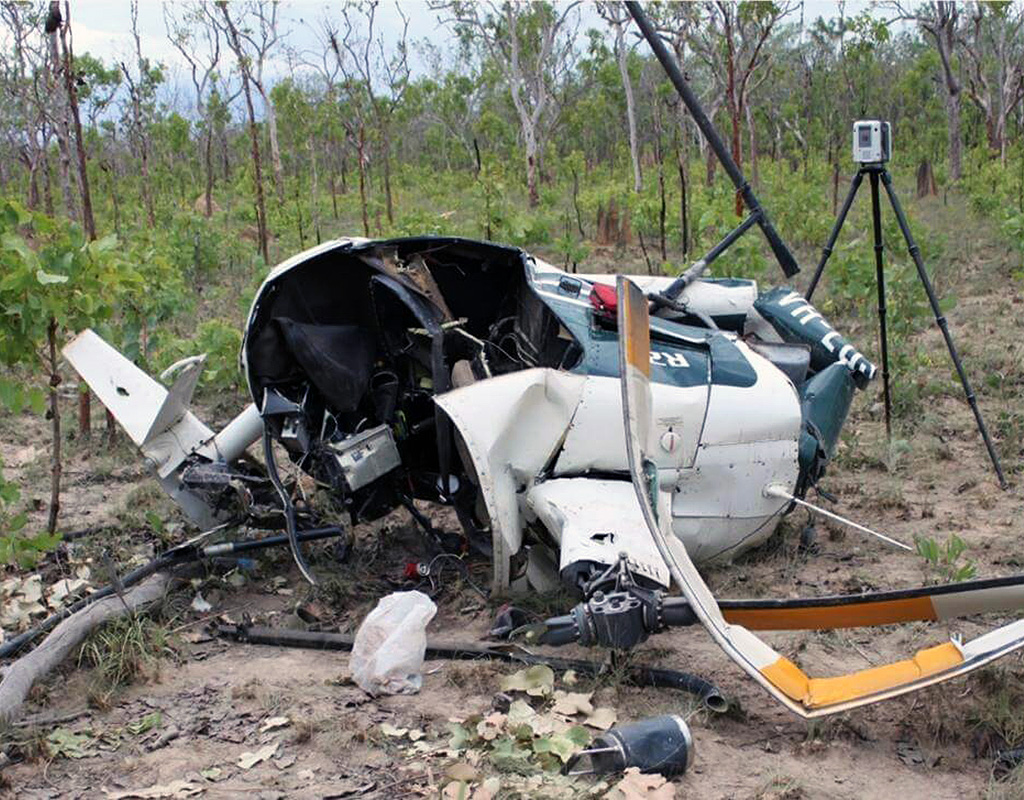
A helicopter accident in Arnhem Land highlights the risks to visual flight rules (VFR) pilots of flying after last light, and the potentially fatal consequences of survivable accidents in remote locations, according to an Australian Transport Safety Bureau (ATSB) investigation report.
The pilot of a Robinson R22 helicopter had been part of a multi-vehicle animal mustering operation in the Arafura Swamp, south of Ramingining, Northern Territory, on Nov. 14, 2022.
After the mustering had concluded for the day, members of the mustering operation began departing the swamp and it was expected the pilot would depart shortly to pick up another member of the group, before continuing to the camp.
However, when other members of the mustering operation arrived at camp, the pilot and helicopter were not there.
Realizing that the pilot was missing and becoming increasingly concerned about the pilot’s welfare, the mustering group subsequently commenced a search using land vehicles, before organizing an aerial search the following morning.
The wreckage of the helicopter was subsequently located at about 13:00 on Nov. 15, about six kilometers from the mustering camp. The pilot was found deceased outside the aircraft, and the helicopter was destroyed.
The pilot held a Commercial Pilot Licence (Helicopter), but was not qualified for flight in non-visual conditions, and the helicopter was not equipped for night flight.
On the evening of Nov. 14, last light occurred at 18:58. Considering the location of the accident site, the pilot probably flew easterly from the camp, facing away from the setting sun. There was no ground-based lighting in the area, and cloudy conditions associated with a nearby storm may have also reduced visibility.
“The ATSB investigation found that the accident flight occurred after nautical twilight and in dark night conditions. The pilot likely became spatially disoriented, leading to a collision with terrain,” said ATSB director, Transport Safety, Dr. Stuart Godley.
ATSB research and investigation reports regularly refer to the dangers of flying after last light without the appropriate qualifications and equipment to do so.
“Dark night conditions provide no useable external visual cues and in these environments all VFR pilots, including those with endorsement to operate under the night VFR, will experience an increased risk of spatial disorientation,” said Godley.
“The ATSB encourages all VFR pilots to take note of the tragic consequences associated with dark night flight in this accident.
“Landing 10 minutes before last night provides reliable method for VFR pilots to ensure they have the necessary visual cues.”
A pathologist’s report found that the injuries sustained by the pilot in the collision were probably not fatal, and that the pilot probably succumbed to environmental exposure.
After the collision, it is likely the pilot maneuvered out of the seat belt, outside of the damaged helicopter, which was laying on its side. With injuries reducing the pilot’s mobility, the pilot likely planned to wait for rescue. The daytime conditions were hot and humid.
While the helicopter was equipped with a manually activated personal locator beacon, the beacon was secured to the inside of the helicopter, and the pilot was probably unable to access it once outside the helicopter after the collision.
The ATSB found that the combination of the personal locator beacon not being activated and authorities not being notified when the aircraft was missing resulted in a delay to the pilot being located before succumbing to environmental exposure after sustaining survivable injuries in the accident.
Godley noted the investigation highlights how remote locations can present an increased risk of fatal consequences from otherwise survivable accidents.
“Pilots operating in remote locations should carefully consider the use and location of equipment such as a personal locator beacon, to maximize the likelihood it will be accessible to them in the event of an accident,” he said.

